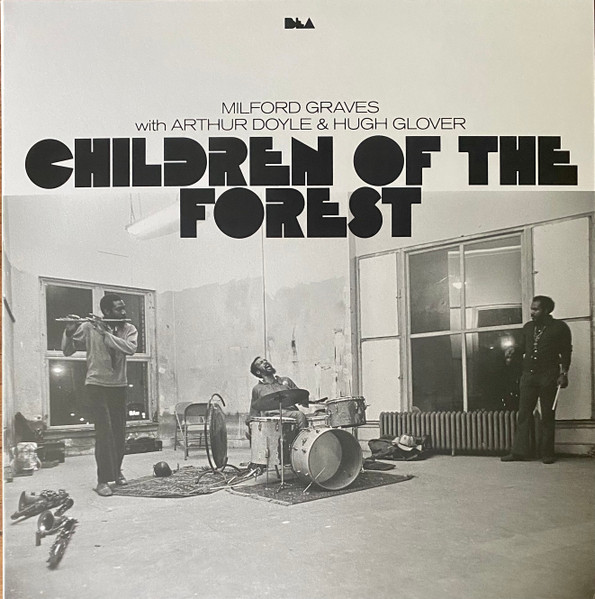MOST READ
- interview with xiexie オルタナティヴ・ロック・バンド、xiexie(シエシエ)が実現する夢物語
- Chip Wickham ──UKジャズ・シーンを支えるひとり、チップ・ウィッカムの日本独自企画盤が登場
- Natalie Beridze - Of Which One Knows | ナタリー・ベリツェ
- 『アンビエントへ、レアグルーヴからの回答』
- interview with Martin Terefe (London Brew) 『ビッチェズ・ブリュー』50周年を祝福するセッション | シャバカ・ハッチングス、ヌバイア・ガルシアら12名による白熱の再解釈
- VINYL GOES AROUND PRESSING ──国内4か所目となるアナログ・レコード・プレス工場が本格稼働、受注・生産を開始
- Loula Yorke - speak, thou vast and venerable head / Loula Yorke - Volta | ルーラ・ヨーク
- interview with Chip Wickham いかにも英国的なモダン・ジャズの労作 | サックス/フルート奏者チップ・ウィッカム、インタヴュー
- interview with salute ハウス・ミュージックはどんどん大きくなる | サルート、インタヴュー
- Kim Gordon and YoshimiO Duo ──キム・ゴードンとYoshimiOによるデュオ・ライヴが実現、山本精一も出演
- Actress - Statik | アクトレス
- Cornelius 30th Anniversary Set - @東京ガーデンシアター
- 小山田米呂
- R.I.P. Damo Suzuki 追悼:ダモ鈴木
- Black Decelerant - Reflections Vol 2: Black Decelerant | ブラック・ディセレラント
- Columns ♯7:雨降りだから(プリンスと)Pファンクでも勉強しよう
- Columns 6月のジャズ Jazz in June 2024
- Terry Riley ——テリー・ライリーの名作「In C」、誕生60年を迎え15年ぶりに演奏
- Mighty Ryeders ──レアグルーヴ史に名高いマイティ・ライダース、オリジナル7インチの発売を記念したTシャツが登場
- Adrian Sherwood presents Dub Sessions 2024 いつまでも見れると思うな、御大ホレス・アンディと偉大なるクリエイション・レベル、エイドリアン・シャーウッドが集結するダブの最強ナイト
Home > Reviews > Album Reviews > Milford Graves With Arthur Doyle & Hugh Glover- Children of the Forest

Milford Graves With Arthur Doyle & Hugh Glover
Children of the Forest
Black Editions
緊那羅:Desi La (Kinnara : Desi La) 訳:江口理恵 Aug 25,2023 UP
森は、不可知の風景であり、深い知識が集積した生態系の謎が散乱しているが、その謎は生態系そのもののみが知り得る。森は、森自体が脈動する惑星で、自らを養い、存在し、再生していくことができる。一方、人間は年齢に関係なく怖がりの赤ん坊であり、真の自由に戸惑い、未知なるものへの不安に尻込みしてしまう。ミルフォード・グレイヴスによるこの黄金の宝に、なぜ「森の子どもたち」というタイトルがつけられたのかを想像してみると、ライナーノーツに書かれているように、グレイヴス自身が所有していた音源のテープは“Pygmy”(ピグミー)とラベリングされ、アルバムの内容とは関係のないオーディオ・ドキュメンタリーが収録されていたが、それは歴史と不安から自由になり、森に放たれた勇敢な子どもたちのみが本当の自由を体験し、知ることができるという意味なのかもしれない。それは形式を捨て去り、厳格な伝統を回避し、未知なる空間へと飛び込むフリー・ジャズ・プレイヤーたちが到達したいと望む種類の自由なのだ。子どもは真のユートピアを提示する隠喩なのである。
ミルフォード・グレイヴスはレジェンド中のレジェンドだ。そして、地球上でもっとも重要な、忘れられたジャズの伝説である。教授という肩書のほか、心臓の類まれな研究者であり、武道家でもあった。ミルフォードの存在なしに、伝統的なブラック・ミュージックのドラム・スタイルと前衛音楽の間にある橋を乗り越えて理解することはできなかっただろう。ミルフォードなしでは、ドラミングが持つ、心臓の異常に対するヒーリング効果についての有効な研究や関心はほとんどなかったのではないか。ミルフォードなしには、アメリカのライトニング・ボルトや、日本、アメリカ、そしてヨーロッパの、そのほかのノイズ・ジャズ・バンドの存在もなかったかもしれない。ドラムスでの総攻撃をすることが可能で、最初は野蛮なパンクのように聴こえるかもしれないが、ミルフォードの演奏は、黒人の歴史、大陸、そして無数のディアスポラ文化が完全に繋がったものなのだ。今日もなお、彼がドラムをたたくか、カオスのようなヴァースを歌ったとしても、東京からラゴス、ロンドン、ニューヨークまでのクラブにいるあらゆる年齢層の人たちの共感を得られるだろう。世界共通言語のクリエイターであるミルフォードは、はじめこそ静かに活動を開始したが、1964年にニューヨーク・アート・カルテットで、アミリ・バラカと悪名高い『Black Dada Nihilismus』を録音し、歴史に名を刻むような評判を確立した。それ以降、彼はジョン・コルトレーンの葬儀やサン・ラーのレコーディングでジャムをし、セシル・テイラー、ソニー・シャロック、ルー・リード、日本のジャズ・レジェンドの阿部薫、アルバート・アイラ―など、“ジャズの神様”のサークルで演奏するようになり、その後自身のグループで、ミルフォードは『Babi』 や『Nommo』、『Meditation Among Us』などいくつかの正真正銘のジャズの名盤を録音した。日本のオーディエンスなら、偉大なる舞踏家、田中泯とのコラボレーションによる日本ツアーで自閉症の人のための学校や子どもと地元のお年寄りのためのコンサートなどでの演奏を覚えているだろう(YouTubeをチェック!!!)。ミルフォードの美学は、ジャズのみならずほかのジャンルのミュージシャンと比べてもじつに革命的だった。日本の地方の町の神社の舞台で、フリー・ジャズのレコードを買うことなど絶対に想像もできないような地元の高齢者に囲まれて演奏したばかりでなく、聴衆を巻き込んで一緒に演奏し、対話への参加を促したのだ。このようなことができるのは、ごく限られたミュージシャンだけである。
私がミルフォードを発見したのは90年代。世界でフリー・ジャズが復活した頃で、とくに活動の中心地ニューヨーク・シティでは、伝説的なニッティング・クラブや多数の地元のフェスでも受け入れられ、知られていた。NYCで一番ホットなアーティストのジョン・ゾーンがダウンタウンでフェスをキュレートしたのだが、そのヘッドライナーのひとりで、黒人たちのヒーローである詩人のアミリ・バラカが30年以上ぶりにニューヨーク・アート・カルテットと再会し、舞台に上がることが発表された。これは過剰な宣伝が展開されたギグのひとつだった。『Black Dada Nihilismus』 を読んだ時の記憶が蘇り、逃してはならない公演となった。コンサート自体は猛烈に激しかったが、詩が轟くその先に佇むミルフォード・グレイヴスが注目をさらい、歴史的な結果をもたらした。こうして、私は初めてミルフォードを知った。私の父親と同じ姓を持つ男のことを。
興味をそそられた私は、数か月後に興奮してミルフォードとゾーンのデュオを観に出かけた。この時期は、ミルフォードの音楽と哲学にとっての再生の時でもあった。80年代と90年代の多くの時期にも忘れられた存在だったが、激しいパフォーマンスと真新しいレコーディングでその名声を取り戻し、「彼はまだやれるのか?」という人々の疑問とのギャップを埋めてみせたのだった。
ステージ上でのミルフォードは、プログレッシヴなビートのなかに多文化を宿し、やがてその無数のテンポがひとつに融合する。彼の百科事典のようなブラック・ミュージックの歴史、アフロ・キューバン・リズムとネイティヴ・アフリカン・ミュージックについての知識は、彼を神秘主義者のようにみせた。彼は決して単一文化を信仰、実践することはなかった。「彼はまだそんなことできるのか? まだあれを保ち続けているのか?」白髪頭で60歳を過ぎたミルフォードは、ステージ上でたくさんの魔法を呼び覚まし、30分以上、ノンストップのライヴ・セットの終わりに、何度もゾーンを肩車したのだ。その間も、ゾーンはメロディックな叫びを爆発させ続けた。この数年間がミルフォードの最後の美しい旅となった。目撃することができ、それについて彼と話しができたことは私にとって僥倖だった。
だからこそ、この新しい録音がいかに貴重なものであるかということを否定するべきではない。私が観たのは、長年かけて収穫され、集積した知識の頂点であった一方、『Children of the Forest』は、彼の成熟期のはじめの頃を聴いているかのようだ。
これらの録音は、猛烈だ。1976年に数か月にわたって行われた個別のセッションが収録されているが、それを受けとめるのには骨が折れる。とくに2023年に生きる私たちの、インスタグラムの5秒間に慣らされたマインドにとっては。悲しくなるほど、注意力が低下しているからだ。したがって、これらのセットの魔法は、歴史的かつ文化的であるというばかりでなく、高次元の力が私たちを内面の傷から救うべく提供してくれる、本物のソノリティ(響き)に耐えるレッスンでもあるのだ。
ミルフォードは、ニューヨーク・シティという地球上で唯一の、磁石のようなエネルギーを自然に育む場所で、このように輝けるサウンドを提供できる演奏者たちを選んだ。アーサー・ドイルとヒュー・グローヴァーは、新しい音楽の文化と信念が浸透した、最盛期を迎えた男たちだった。絶え間なく疾走するミルフォードが、瞬時にジャンル間を行き来するのに追随し、補完することまで出来た彼らはミルフォードのもっとも有名な代表作のひとつ、『Babi』の録音にも参加した。そのため、この魔法の証拠にさらなるアクセスができるのは……とても刺激的なことだ。彼らのインタープレイの美を解するには、複数回の傾聴と、深い分析と審美眼が問われる。なにせ未来は、フリー・ジャズにとって何年も優しくなることはないからだ。
ニューヨーク・ジャズ・シーン最盛期の1976年、レーガノミクス、クラック世代、エイズ世代、ヒップホップやヘヴィメタルの誕生など、80年代に突入する4年前に録音された『Children of the Forest』 は、ファイヤー・ジャズ/フリー・ジャズという芸術形式が一般社会での重要性を失いかけた時期を記録したともいえる。フリー・ジャズは60年代から70年代にかけても、常に広い尊敬を集めていたわけではないが、80年代には変化する文化力学により、大きく影を潜めることとなった。消滅こそしなかったものの、ジャズは大きく停滞した。この停滞期のはじめ頃、ミルフォード自身も姿を消した。学者としての活動と、家庭生活の中に行方をくらましたのだった。ドラム・キットを抱えてのツアーという厳しい道程は、ほぼ脇に追いやられた。ミルフォードは、90年代後半にゾーンと出会うまで、ほとんど何も録音することはなかった。入手可能なミルフォードの音源は、両手で数えられるほどだった。この状況をサン・ラーやセシル・テイラーと比べてみると、歴史的な重要性の高さを認識できる。私が最後にミルフォードを訪ねたのは、ジャマイカ郊外とニューヨークのクイーンズの、彼が自らの手で装飾した自宅で、私は録音の少なさを彼に訴えた。すると、彼は、地下室のコンパクトな書斎の片側に、リリースされたばかりのニューヨーク・アート・カルテットのボックス・セットとその他のものが山積みになっている所を指さし、希望を捨てるなと言った。まだほかに控えているものがある、と。幸いなことに、『Children of the Forest』で、私たちには彼の演奏芸術とビートセントリック(ビート中心主義)の世界観への新たな窓が残されている。
Kinnara : Desi La
The forest is an unknowable landscape deep in knowledge and littered with mysteries of ecosystems only the ecosystems themselves understand. The forest to itself is a pulsating planet that feeds itself and knows how to exist and regenerate. Humans on the other hand no matter their age are scared babies hesitant toward real freedom always held back by trepidation of the unknown. If I were to imagine why this golden treasure by Milford Graves were named “Children of the Forest,” besides the linear notes stating the original tape from Graves himself was labeled Pygmy and included unrelated documentary audio of said subject, it might be to say that courageous children released into the forest, free from history and apprehension, only can experience and know true freedom. The type of freedom that free jazz players who discard formality, avoid strict tradition, and dive into unknown spaces are eager to achieve. The child state a metaphor of real utopia.
Milford Graves is a legend above legends. And also one of the most important forgotten jazz legends on Earth. Besides being a professor, heart irregularity researcher and a martial artist. Without Milford, there would be no understanding of the bridges between traditional Black music drum styles and avant garde music. Without Milford, there would be little valid research or interest in the healing properties of drumming toward heart
irregularities. Without Milford, there would be no bands like Lightning Bolt (US) and other noise jazz bands in Japan, the US, and Europe. Capable of creating an all out of assault on drums that might mirror savage punk at first listen, Milford`s playing is a complete connection of Black history, continents and numerous diaspora cultures. Even today were he to drum or sing chaotic verses, it would be relatable to all ages in clubs from Tokyo to Lagos to London to New York. A creator of a universal language, Milford started off quieter but no less historic establishing his reputation with the New York Art Quartet in 1964 recording the infamous cut “Black Dada Nihilismus” with Amiri Baraka. From then on he was always in the “jazz god” circles playing at John Coltrane`s funeral, jamming and recording with Sun Ra, Cecil Taylor, Sonny Sharrock, Lou Reed, Japanese free jazz legend Abe Kaoru, Albert Ayler and then his own groups. Milford recorded several bonafide jazz classics like “Babi”, “Nommo,” and “Meditation Among Us.” Japanese audiences should remember well his collaborations with Japanese dance / acting legend Min Tanaka and their amazing tours around Japan at a school for autism, rural concerts to both kids and elderly locals, and concert stages. (check YOUTUBE!!!!). Milford`s aesthetic was more revolutionary than most musicians jazz or not. In the middle of a rural Japanese town, on a Shinto stage surrounded by elderly locals who would never know to buy a free jazz record, he not only played to the audience but played with them, encouraging them to join in the
dialogue. Few musicians have the language or confidence to do this.
When I discovered Milford, it was the 90`s. Free jazz resurging around the world and especially in its epicenter NYC, was appreciated and celebrated in the many clubs like the legendary Knitting Factory and numerous local festivals. John Zorn was one of the hottest artists in NYC and curated a seaside festival downtown. One of the headliners, Amiri Baraka. A hero poet to all Black people, the announcement that he would take the stage in a 30 year + reunion with the New York Art Quartet was one of the strongest hype gigs going round. Memories of reading “Black Dada Nihilismus” made the date impossible to miss. The concert itself was absolutely blistering but standing out beyond the bellows of poetry was the drummer. Milford Graves took the stage and the results were historic. And so I came to know of Milford for the first time. A man who had the same last name as my father.
Intrigued I excitedly ran to see Milford play in a duo with Zorn months later. This period would become a renaissance for Milford`s music and philosophy. Nearly forgotten in the 80`s and much of the 90`s too, he reclaimed his fame with blistering performances and brand new recordings that filled the gap of “could he still do that?”
On stage, Milford inhabited multi-cultures within a progressive beat that merged numerous tempos in one. His encyclopedic knowledge of black music history, afro- cuban rhythms and native African music as well made him almost a mystic. He was never monocultural in belief or practice. “Could he still do that? Does he still have it?” Milford, gray haired and past his 60`s conjured so much magic on stage and more than once lifted Zorn on his shoulders right at the end of the 30 minute nonstop live set while Zorn would continue blasting his melodic screams. These years would be Milford`s final beautiful journey. One I was blessed to witness and talk to him about.
So it should not be dismissed at how valuable this new recording is. While what I saw was the culmination of years of harvested knowledge, CHILDREN OF THE FOREST, on the other hand is like listening to him at the beginning of his maturity.
The recordings are brutal. Several separate sessions over months in 1976 but still it is a lot to take it. More so now in 2023 because of our 5 sec instagram minds. Our attention spans have incredibly deteriorated. Sadly. Hence the magic of these sets are not only historical or cultural but lessons in patience for the moments that higher powers provide us genuine sonorities to rescue us from our internal injuries.
Milford chose players who could provide these glorious sounds in New York City, the one place on Earth that naturally nurtured this type of magnetic energy. Arthur Doyle and Hugh Glover were men in their prime seeping in the culture and belief of the new music. Able to follow and compliment Milford`s continuous gallop between split second genres. These men would follow Milford in recording one of his most famous works, Babi. So having access to more evidence to the magic is .......so exhilarating.The beauty of their interplay demands multiple listenings and deep analysis and appreciation. Especially because the future would not be kind to free jazz for many years.
Recorded in 1976, at the height of the New York City jazz scene, 4 years before entering the 80`s, Reagonomics, the crack generation, the AIDS generation, the birth of hip hop and heavy metal, CHILDREN OF THE FOREST is a recording of the art form of fire jazz / free jazz at the end of its significance in general society. Free jazz was not always wildly respected in the 60`s or 70`s but in the 80`s it would largely be overshadowed by a shifting cultural dynamic. Jazz didn’t disappear but it did grow largely stagnant. At the beginning of this stagnancy, Milford himself disappeared. Disappeared into scholastic life and family life. The rough road of touring with a drum kit largely cast aside. Milford recorded almost nothing again til meeting with Zorn in the late 90`s. I think I can count the
number of available Milford recordings on 2 hands. Compare this situation to Sun Ra or Cecil Taylor and the gravity of historical importance is huge. When I last visited Milford at his self-styled home in a normal suburb in Jamaica, Queens, New York City, I complained about the lack of recordings available. He pointed to his just released New York Art Quartet box set and a pile of things accumulated in the other end of his compact study basement suggesting don’t give up hope. More is on the way. Luckily with CHILDREN OF THE FOREST we are left another window into the art of his playing and his beatcentric world view.
緊那羅:Desi La (Kinnara : Desi La)
ALBUM REVIEWS
- Loula Yorke - speak, thou vast and venerable head/ Loula Yorke - Volta
- Actress - Statik
- Black Decelerant - Reflections Vol 2: Black Decelerant
- High Llamas - Hey Panda
- The Stalin - Fish Inn - 40th Anniversary Edition -
- KRM & KMRU - Disconnect
- Cornelius - Ethereal Essence
- Kronos Quartet & Friends Meet Sun Ra - Outer Spaceways Incorporated
- Martha Skye Murphy - Um
- Mouchoir Étanche - Le Jazz Homme
- Taylor Deupree - Sti.ll
- John Cale - POPtical Illusion
- Amen Dunes - Death Jokes
- A. G. Cook - Britpop
- James Hoff - Shadows Lifted from Invisible Hands


 DOMMUNE
DOMMUNE
